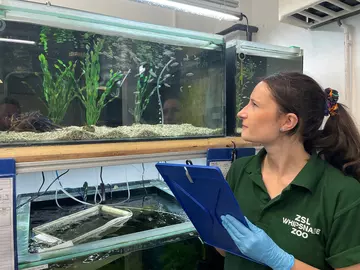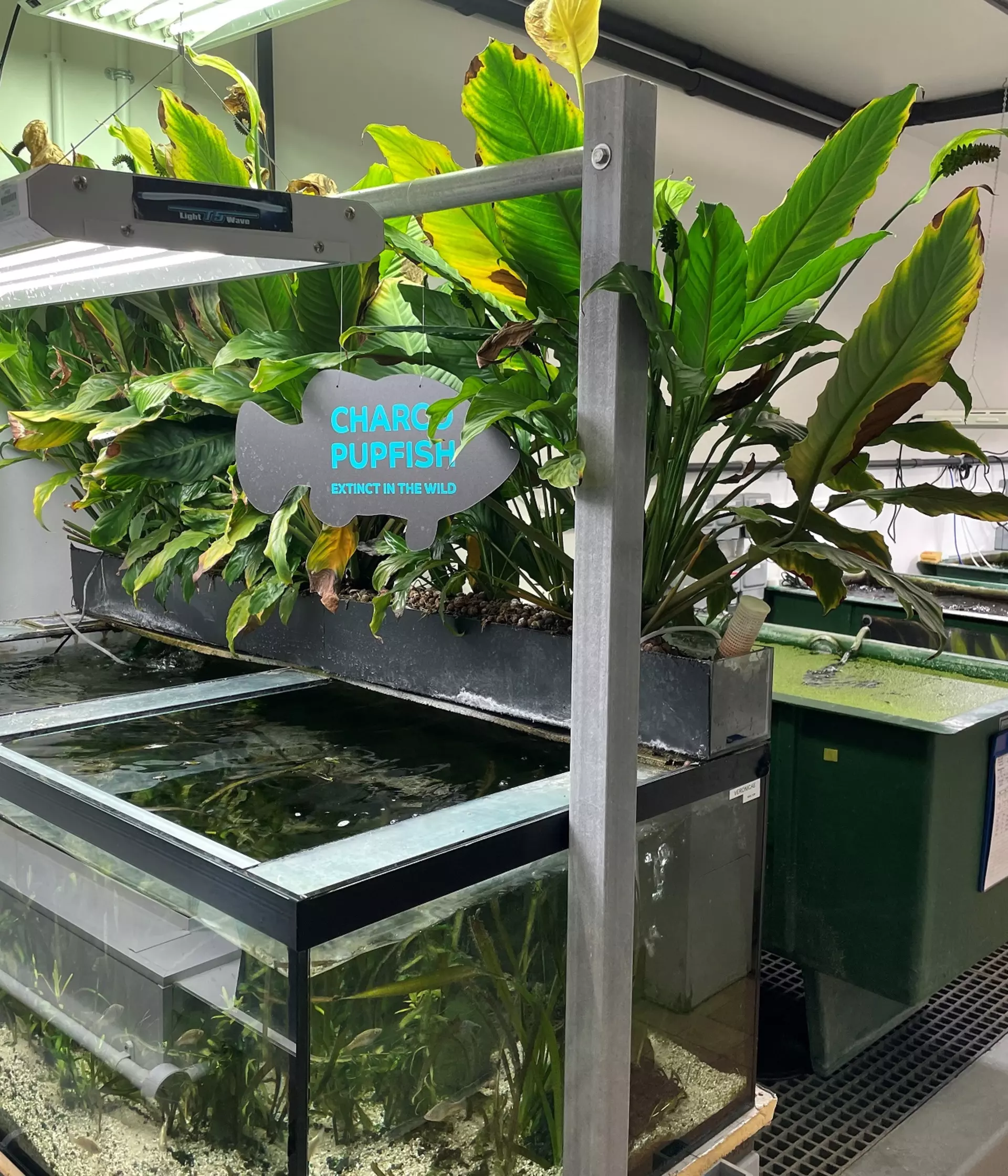What does extinct in the wild mean?
Extinct in the Wild is a category on the IUCN Red List of Threatened Species, with a current confirmed total of 84 species desperately in need of our help, and with many more heading in this direction.
Extinct in the wild species are therefore the most threatened species on the planet. Their survival depends entirely on specialist human care provided largely by conservation zoos, aquariums, and botanic gardens.
Nature can recover
Conservation Zoos like London and Whipsnade make a real difference to extinct in the wild species. From research to fieldwork, and in our zoos, we identify and conserve the species at risk of extinction – and get them on the road to recovery.
In our two conservation Zoos, we care for extinct in the wild species ranging from island snails and freshwater fish to forest birds and subtropical mammals. Most of these animal species are only found under human care in tiny populations.
Why are these animals extinct In the wild?
A species can become extinct in the wild for many reasons. It may have been restricted to a small area such as a single island. This can make a species vulnerable to threats such as the introduction of a new species such as rats. More widespread species have also fallen victim to threats such as hunting or habitat loss which is sometimes caused by climate change. These threats can cause populations to dramatically reduce in size until they become restricted to one remaining isolated population.
It is often at this point, fearing the worst, that individuals have been brought into conservation breeding programmes. But sometimes it is also luck that animals were held by zoos prior to populations becoming so small and then disappearing from the wild.
When species no longer exist in the wild, their continued conservation relies completely on human care. The IUCN Species Survival Commission (SSC) acknowledges the significant contributions that botanic gardens, aquariums and zoos can, and do, bring to conserving wild animals.
How do Zoos help conservation?
Conservation Zoos like London and Whipsnade make a real difference. We apply specialist scientific expertise and care to help these incredibly important species, from strategic rescues from otherwise doomed wild populations, care in our Zoos and, ultimately, successful return to free living healthy wild populations.
Our conservation Zoos care for more than half of the world’s extinct in the wild animal species both in-situ and out in the field where courageous efforts are underway to return species to the wild. The long-term fate of extinct in the wild species are in our hands – and needs government investments and science-driven conservation to help protect their future.
What is ZSL doing to save extinct in the wild species?
We believe that the recovery of species, whose entire existence we hold in our hands, is one of the most important objectives for our Zoos. But we cannot achieve this alone, and we need a global movement of like-minded organisations to help achieve this vision.
We have formed partnerships with other conservation professionals to secure the future for these species and restore them back to the wild. We strive to let none of the extinct in the wild species we care for slip into extinction.

Our work goes beyond the expert care we provide to the animal species in our conservation Zoos to include carefully planned and resourced rescue operations for species where continued existence in the wild is not possible. We are releasing species back to the wild and reinforcing these newly wild populations drawing on our cutting-edge science and field management support. Together with our partners, we will lead by example and inspire and help others to turn innovative plans into courageous actions.
This bold initiative is not easy. We will draw on our unique strengths in conservation and science to find actionable solutions – to protect each species from their unique threats. The extinct in the wild programme is split into four areas of work:
Rescue
Create the first zoo populations of highly threatened species that are likely to need support to avoid imminent extinction.
Revitalise
Look after these species in each of our conservation Zoos, provide world-class care and breeding management to improve their genetic viability and increase their population size, to prepare them for potential future release(s).
Release
Return species currently only living in zoos to the wild to restore free-living, wild populations.
Reinforce
Improve the conservation status of species where releases have already occurred, leading to eventual down listing on the IUCN Red List of Threatened Species. An example of this can be seen with the Scimitar horned oryx:
Extinct in the Wild antelope brought back from brink of extinction | ZSL
*ZSL is celebrating recent down listing of the Scimitar horned oryx from extinct in the wild to endangered
Extinct in the wild antelope brought back from brink | Whipsnade Zoo
Successful species reintroductions to the wild
We have a long history in nurturing these species, including chairing a partnership to release sihek (Guam kingfisher) back to the wild; continuing to be a lead partner in the reintroduction of Partula snails in French Polynesia over the last three decades; and providing expert input on long-term field monitoring as part of a wider conservation collaboration for scimitar-horned oryx reintroduction in Chad.
The strong focus on conservation translocations and habitat protection is vital for long-term protection of species, and for broader global biodiversity.
The future for threatened species
By working to save the worlds most threatened group of species we will help nature recover and showcase how we can work to help wildlife and people thrive together. Join us. Join the fight to save our natural world.
Sign up here to receive email newsletter updates from ZSL
Click here to support our work
Donate Now Membership Fellowship
